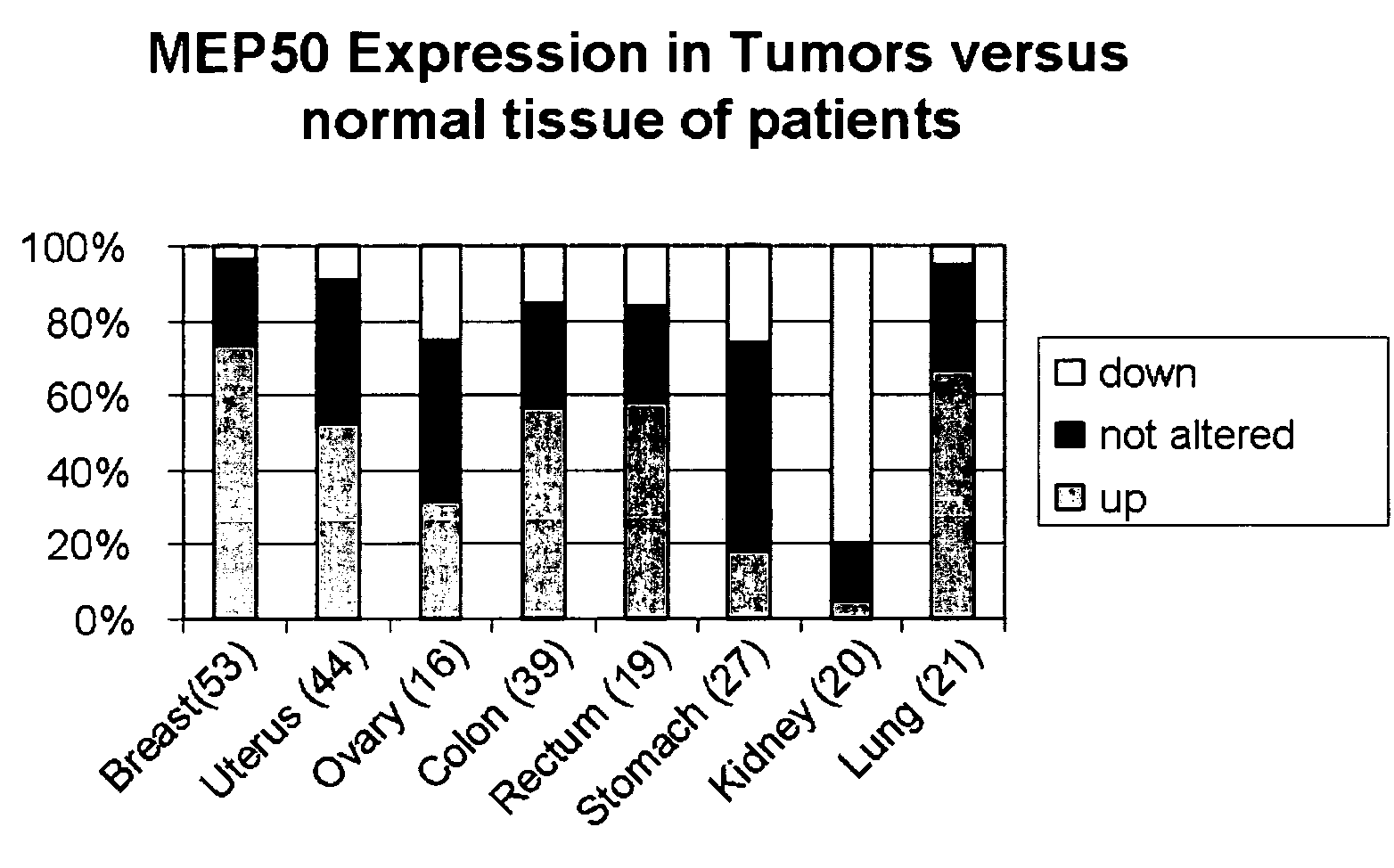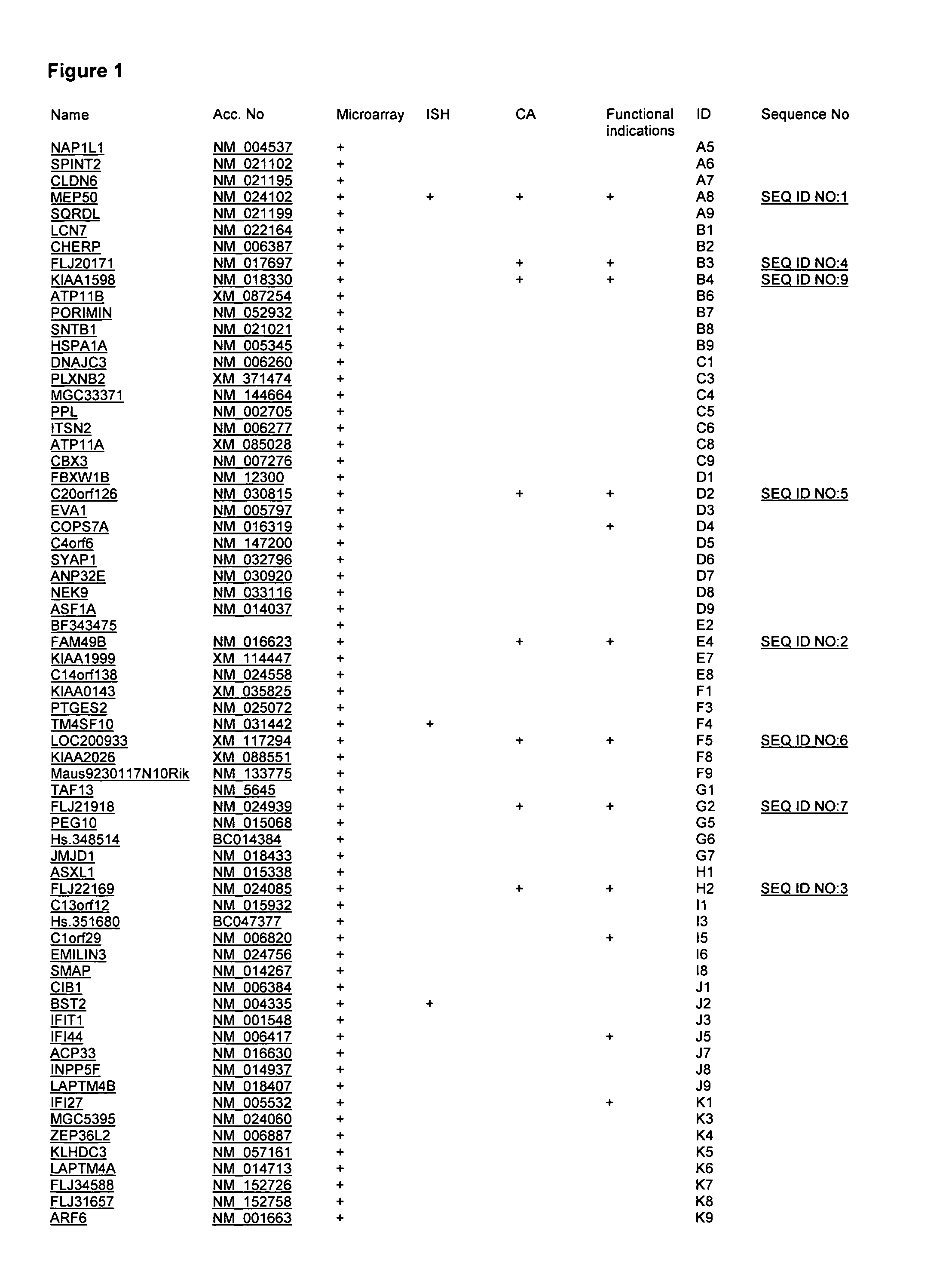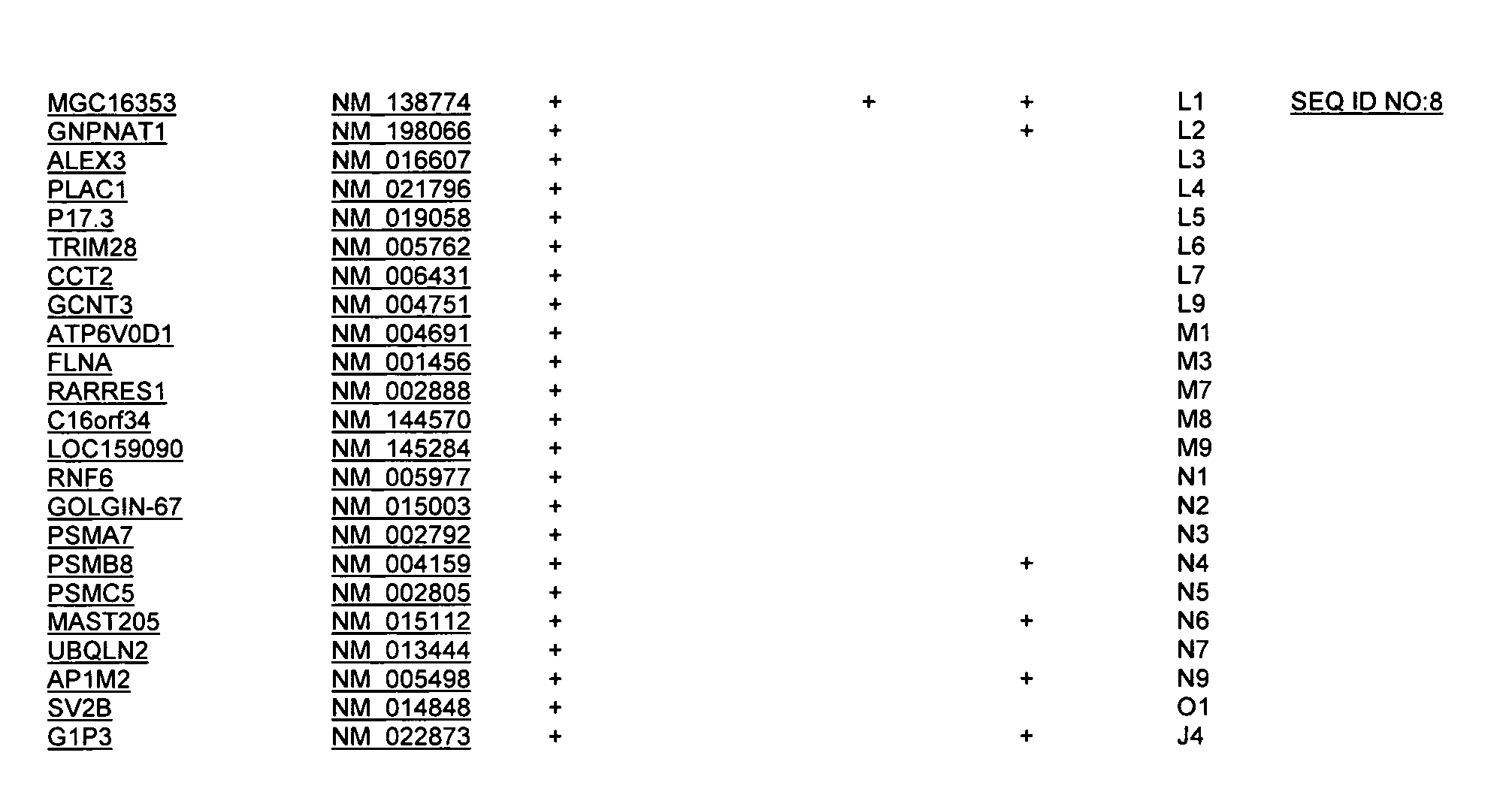Identification of Human Gene Sequences of Cancer Antigens Expressed in Metastatic Carcinoma Involved in Metastasis Formation, and Their Use in Cancer Diagnosis, Prognosis and Therapy
a human gene sequence and metastatic carcinoma technology, applied in the field of identification of human gene sequences of cancer antigens expressed in metastatic carcinoma involved in metastasis formation, can solve the problems of difficult prediction of which tumors will progress and will eventually meetastasize to other tumors, and difficult to distinguish between these subpopulations of patients
- Summary
- Abstract
- Description
- Claims
- Application Information
AI Technical Summary
Problems solved by technology
Method used
Image
Examples
example 1
[0080]SEQ ID NO:1 (A8)
[0081]One rat cDNA clone, originally derived from the above described SSH analysis of the mammary tumor test system was used to establish the corresponding EST (Expressed Sequence Tag) cluster from rat EST databases. The nucleotide sequence identity within the cluster was over 96%. The consensus sequence of this cluster was used to run a blast (Basic Local Alignment Search Tool, http: / / www.ncbi.nlm.nih.gov / BLAST / ) analysis against mouse gene sequence databases. A sequence identity of 89% was found with the mouse mRNA BC005755, which again showed a 89% identity on the nucleotide sequence level to the mRNAs of the human MEP50 gene sequence. The corresponding NCBI (National Center for Biotechnology Information) reference sequence (http: / / www.ncbi.nlm.nih.gov / RefSeq / ) for this locus, NM—024102 has a length of 2428 nucleotides and codes for a protein of 342 amino acids. The gene MEP50 maps on chromosome 1.
[0082]MEP50 contains a G-protein beta WD-40 repeat according ...
example 2
[0106]SEQ ID NO:2 (E4)
[0107]Another rat cDNA clone, originally derived from the above described SSH analysis of the pancreatic tumor test system was used to establish the corresponding EST cluster from rat EST databases. Nucleotide sequence identity with an identified rat sequence cluster was over 96%. Three further clones derived from this pancreatic test system also matched to this gene sequence cluster with over 96% nucleotide sequence identity. The consensus sequence of this cluster was established by using the software DNAStar, SeqManII (http: / / www.dnastar.com / ), and was subsequently used in blast analysis using the human genome sequence database BLAT (http: / / genome.ucsc.edu / cgi-bin / hgBlat?command=start). This way, a nucleotide sequence identity of 90% was identified with the human mRNA AK130372 representing the locus FAM49B (family with sequence similarity 49, member B), alias BM-009. The corresponding NCBI reference sequence for this locus, NM—016623 comprises a length of 221...
example 3
[0115]SEQ ID NO:3 (H3)
[0116]Another rat cDNA clone, originally derived from the above described SSH analysis of the pancreas tumor test system was used to establish the corresponding EST cluster from rat EST databases. Identity to the ESTs within this cluster was 98%. Identity within the cluster was over 96%. The consensus sequence of this cluster was used to blast against human genome sequence databases. An identity of 89% was found to the human mRNA NM—024085 representing the locus FLJ22169. The reference RNA has a length of 3816 nucleotides and codes for a predicted protein of unknown function with 839 amino acids. According to Pfam Search the predicted protein shares homology to Autophagy protein Apg9. In yeast, 15 Apg proteins coordinate the formation of autophagosomes. Autophagy is a bulk degradation process induced by starvation in eukaryotic cells. Apg9 plays a direct role in the formation of the cytoplasm to vacuole targeting and autophagic vesicles, possibly serving as a m...
PUM
| Property | Measurement | Unit |
|---|---|---|
| Fraction | aaaaa | aaaaa |
| Fraction | aaaaa | aaaaa |
| Fraction | aaaaa | aaaaa |
Abstract
Description
Claims
Application Information
 Login to View More
Login to View More - R&D
- Intellectual Property
- Life Sciences
- Materials
- Tech Scout
- Unparalleled Data Quality
- Higher Quality Content
- 60% Fewer Hallucinations
Browse by: Latest US Patents, China's latest patents, Technical Efficacy Thesaurus, Application Domain, Technology Topic, Popular Technical Reports.
© 2025 PatSnap. All rights reserved.Legal|Privacy policy|Modern Slavery Act Transparency Statement|Sitemap|About US| Contact US: help@patsnap.com



